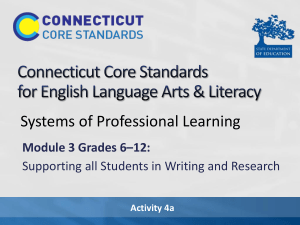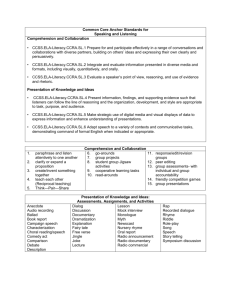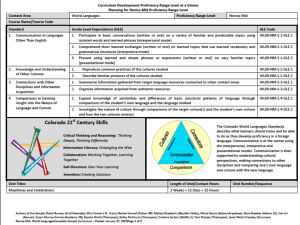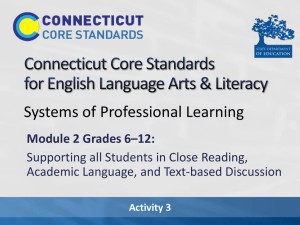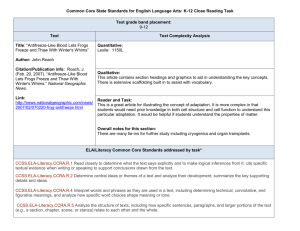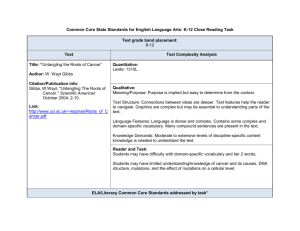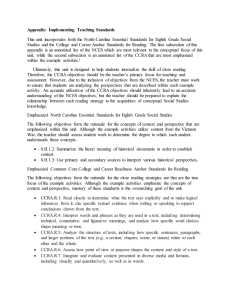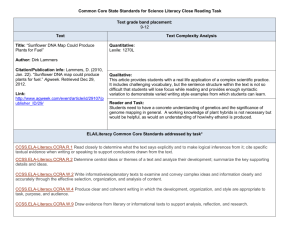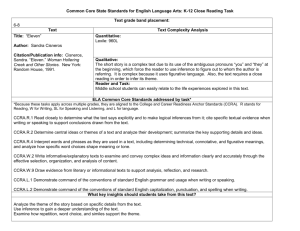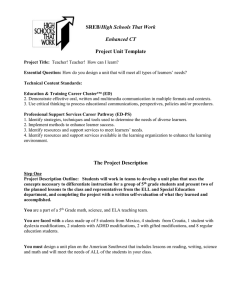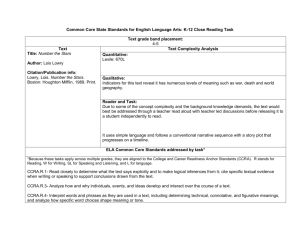brazilglobalcompetencelesson-_building_relationships_2
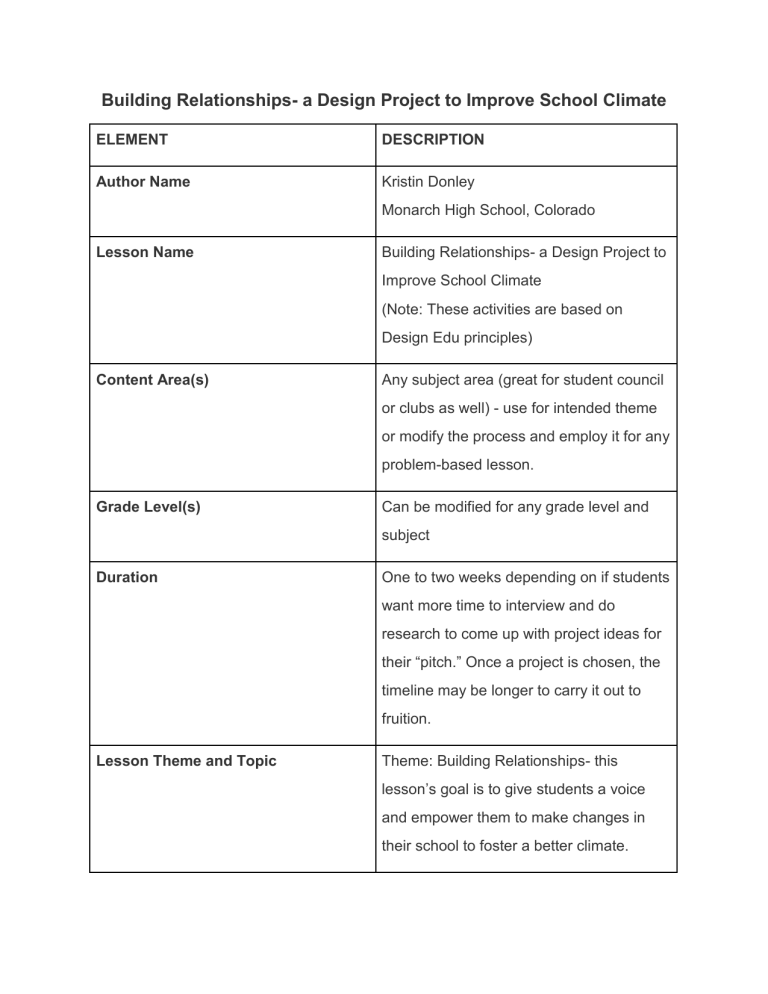
Building Relationships- a Design Project to Improve School Climate
ELEMENT DESCRIPTION
Author Name
Lesson Name
Content Area(s)
Grade Level(s)
Duration
Lesson Theme and Topic
Kristin Donley
Monarch High School, Colorado
Building Relationships- a Design Project to
Improve School Climate
(Note: These activities are based on
Design Edu principles)
Any subject area (great for student council or clubs as well) - use for intended theme or modify the process and employ it for any problem-based lesson.
Can be modified for any grade level and subject
One to two weeks depending on if students want more time to interview and do research to come up with project ideas for their “pitch.” Once a project is chosen, the timeline may be longer to carry it out to fruition.
Theme: Building Relationships- this lesson’s goal is to give students a voice and empower them to make changes in their school to foster a better climate.
Instructional Objectives
Specific Global Competencies
Students will employ basic engineering design, group communication and presentation skills to create a 4 minute pitch around an idea to change something in the school or create something that fosters a positive school climate and helps the school community break down barriers and build relationships.
Students will:
1. Investigate the world beyond their immediate environment, framing significant problems and conducting well-crafted and age-appropriate research.
2. Recognize perspectives, others’ and their own, articulating and explaining such perspectives thoughtfully and respectfully.
3. Communicate ideas effectively with diverse audiences, bridging geographic, linguistic, ideological, and cultural barriers.
4. Take action to improve conditions, viewing themselves as players in the world and participating reflectively. (reference:
Educating for Global Competence: Preparing Our Youth to
Engage the World, 2011)
Students will employ the following skills:
1. Investigate the World- a. Identify an issue, generate questions, and explain its significance b. Use a variety of resources to evaluate and weigh the relevance
Specific Global Competencies c. Analyze, integrate and synthesize evidence to construct a coherent response d. Develop an argument based on the evidence
2. Recognize Perspectives a. Recognize and express their own perspective and identify influences on that perspective b. Examine others’ perspectives and identify what influences them c. Explain the impact of cultural influences d. Articulate how differential access to technology, knowledge, and resources affects quality of life and perspectives
3. Take Action- Students translate ideas into appropriate actions to improve conditions a. Identify and create opportunities for personal or collaborative action to improve conditions b. Assess options and plan actions based on evidence and potential for impact c. Act, personally or collaboratively,
Specific Global Competencies
Alignment to District or State Content
Standards and Testing and
Assessment in creative and ethical ways to contribute to improvement, and assess impact of actions taken d. Reflect on capacity to advocate and contribute to improvement
4. Communicate ideas- a. Recognize and express how diverse audiences perceive meaning and how that affects communication b. Listen to and communicate effectively with diverse people c. Select and use appropriate technology and media to communicate with a diverse audience d. Reflect on how effective communication affects understanding and collaboration in an interdependent world
Common Core- http://www.corestandards.org/ELA-
Literacy/CCRA/SL
1.
Comprehension and Collaboration a.
CCSS.ELA-
Literacy.CCRA.SL.1
Prepare for and participate effectively in a range of conversations and collaborations with diverse partners, building on others’
ideas and expressing their own clearly and persuasively. b.
CCSS.ELA-
Literacy.CCRA.SL.2
Integrate and evaluate information presented in diverse media and formats, including visually, quantitatively, and orally. c.
CCSS.ELA-
Literacy.CCRA.SL.3
Evaluate a speaker’s point of view, reasoning, and use of evidence and rhetoric.
2.
Presentation of Knowledge and Ideas a.
CCSS.ELA-
Literacy.CCRA.SL.4
Present information, findings, and supporting evidence such that listeners can follow the line of reasoning and the organization, development, and style are appropriate to task, purpose, and audience. b.
CCSS.ELA-Literacy.CCRA.SL.5
Make strategic use of digital media and visual displays of data to express information and enhance understanding of presentations. c.
CCSS.ELA-Literacy.CCRA.SL.6
Adapt speech to a variety of contexts and communicative tasks, demonstrating command of formal English when indicated or appropriate.
Colorado Workforce Readiness Skillshttp://www.cde.state.co.us/sitoolkit/Downloads/
PWR_21st/21stCenturySkillsFlier.pdf
Colorado workforce readiness skills include:
1. Finding and Using information and IT
2. Creativity and Innovation
3. Collaboration
4. Work Ethic
5. Critical Thinking and Problem Solving
6. Civic Responsibility
7. Communication
8. Personal Responsibility
9. Global and Cultural Awareness
Instructional Strategies and Activities Students will work through eight activities modeled around design principles. These activities are designed to encourage students to work collaboratively to identify a “need” that can be addressed to increase a positive school climate and build relationships. Students will create a 4 minute pitch and one or more of the projects will be picked to take action on.
Please see attached documents for the explanation of the activities.
Formative Assessment
Differentiation
Resources
Formative Assessments:
1. Rubric for judging of pitch projects
2. Sticky notes for student to student feedback on projects
3. Eight activities (see instructions)
All activities can be modified with instructor determination on length of time given to complete.
Supplies needed:
1. 3-4 pads of sticky notes per group in different colors
2. Poster paper or poster board
Reflections and Advice
3. Pens and markers
4. Scissors
5. Glue
6. Tape
7. Felt, clay, tongue depressors, construction paper or any other creative supplies
8. Computer and projector to show video in activity three
9. Teachers will need to provide copies of raw district and/or school climate data if available
10. Funds for project completion
● This project is intended to give students a voice and empower them to take action through a design process. This same method can be used in any project in which you want students to work collaboratively to problem solve in a creative and innovative manner.
● Students can use sticky notes to collect thoughts and give feedback on project pitches to groups, or if available instructors can put videos of pitches up on a website and create a Google form to collect votes and feedback.
● Any parts of the activities can be
integrated with technology (i.e., Use
Google docs for collaboration, Prezi for presentations, etc…)
